#Civil Rights Act of 1968
Text
Today's Black History Month illustration is of Josephine Baker. She was a world famous entertainer, WWII spy, and activist.

Freda Josephine McDonald was born in St. Louis, Missouri in 1906. Her parents were both vaudeville performers, but Baker would have to take on odd jobs to help support her family.

At the age of 15, she ran off and joined a dance troupe from Philadelphia. She also got married, took her husband’s last name, dropped her first name and started going by the name Josephine Baker. After acting and dancing in musicals, she moved to New York City and was soon performing at the Plantation Club where she became a crowd favorite.

In 1925, Baker went to Paris to dance at the Théâtre des Champs-Élysées in La Revue Nègre. When the Revue closed, she was given her own show and her career skyrocketed.

She was the first Black woman to star in a motion picture and one of the first Black entertainers to achieve acclaim on screen and stage.
Baker became a citizen of France in 1937. When the Germans occupied France during WWII, she worked with the Red Cross and the French Resistance by transporting confidential information by writing with invisible ink on her sheet music. She was awarded the Croix de Guerre and the Legion of Honor with the rosette of the Résistance.

Baker traveled many times to the US to participate in the civil rights movement. She was the only woman who spoke at the March on Washington for Jobs and Freedom in 1968.
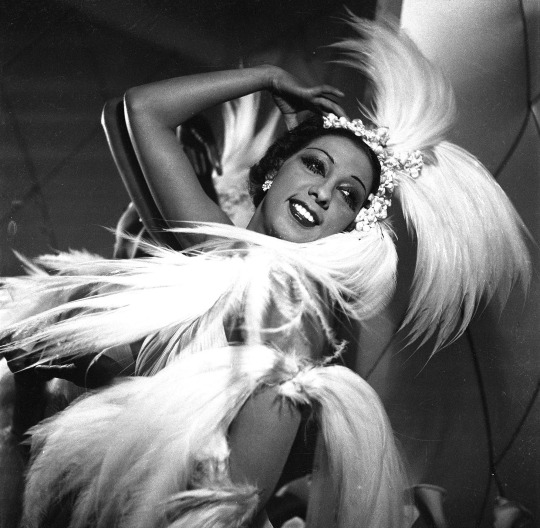
Her time at home forced her to confront segregation and discrimination that she didn’t experience overseas. She often refused to perform for segregated audiences and club owners were forced to integrate for her shows.
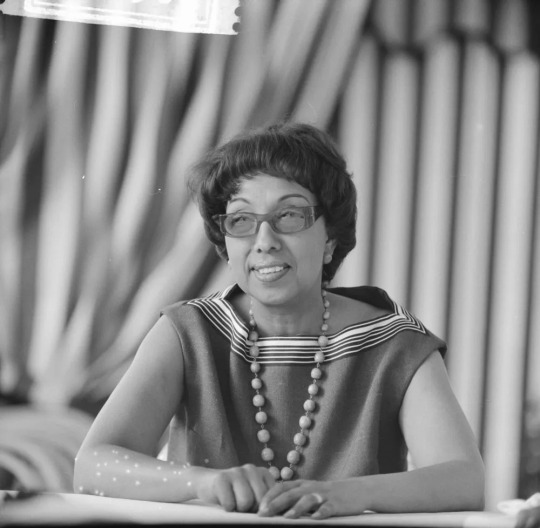
She continued to perform until her death in 1975, during the celebration of the 50th anniversary of her Paris debut.
I’ll be back on Monday with the last illustration and story!
#josephine baker#black history facts#black history month#black history 365#artists on tumblr#illustrators on tumblr
2K notes
·
View notes
Text


I was wondering how accurate this was so I did some fun googling and yall.
So starting with the fact that police in the USA were formed when Dems had Congress and Senate and the same was true when the first organized police department was founded (in Boston, btw)....
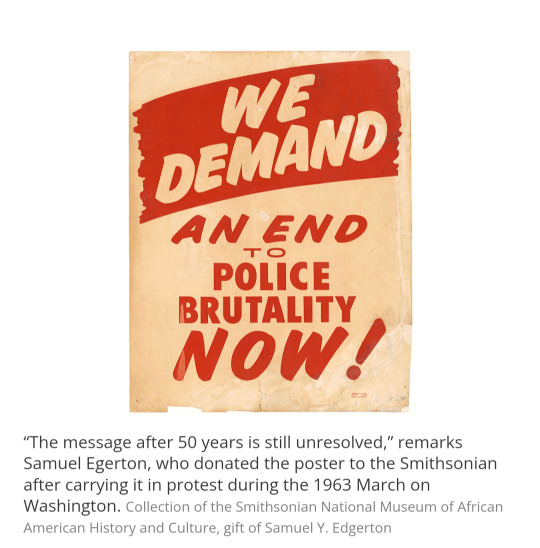
1963. Dems had Senate and Congress.
While this allowed for huge strides in civil rights police brutality still continued to be largely unaddressed.
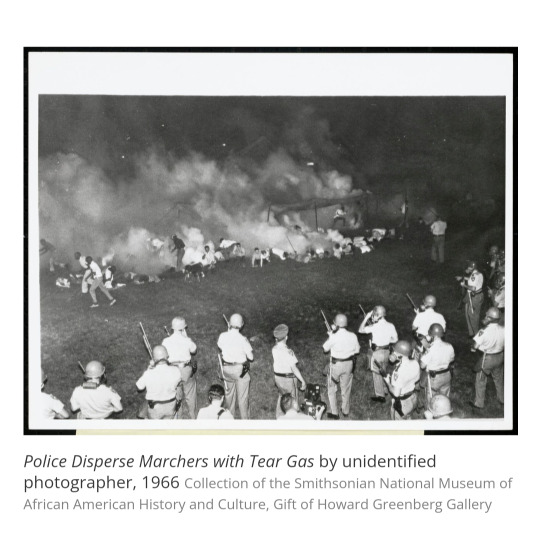
1966. Dems had Senate and Congress.
To point out further racial oppression James Meredith starts a 270 mile walk from Memphis, TN to Jackson, MI. He's shot by a sniper the second day which causes an influx in support from allies & prominent civil rights members (such as MLK) who fly out and walk in his stead.
Governor Johnson (d) of Mississippi, who ran on a segregationist platform but changed platforms when he saw that Black people were gaining more supporters, promises to protect marchers as they pass through his state. Police then tear gas them as they were setting up tents for the night in Canton, MI (pictured). 15k show up to Jackson. It's the biggest march in MI history and more successful than Meredith had planned.
No bills were introduced that year.
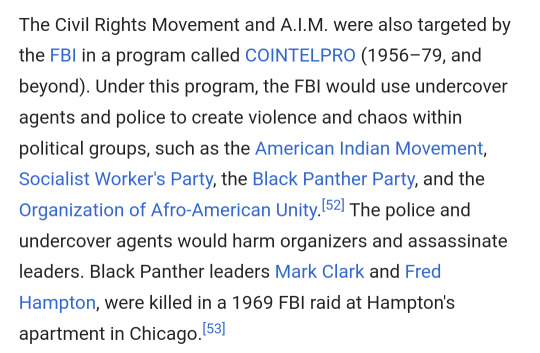
1956-1979 Dems had senate & Congress.
In 1961-69 they even had a governmental trifecta with Congress, Senate, and the presidency and again in 1977-79. The director of the FBI at the time was Republican J. Edgar Hoover. Head of Intelligence was Democrat William Sullivan. Attorney General & democrat Robert F. Kennedy authorized several programs for them such as wire-tapping MLK.
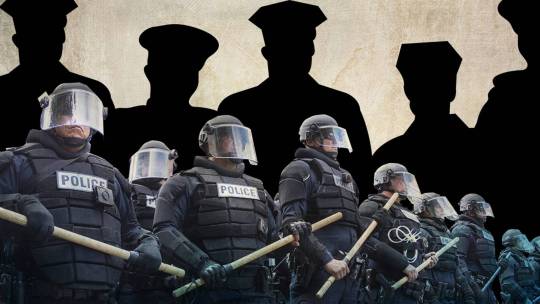
1968. Dems had Senate, Congress, and presidency.
President Lyndon Johnson (Democrat president while Dems had Congress & Senate) signs the Omnibus Crime Control and Safe Streets Act of 1968, birthing the Law Enforcement Assistance Administration & granting federal funds to local governments in order to obtain military resources to quell potential riots. A direct response to the protests and riots throughout the 50's & 60's. Protecting police from protesters.
Democrats do this instead of protecting the public from police and their prejudice.

1992. Dems have both Senate and Congress.
After the verdict of the 4 police who beat Rodney King on camera is announced & they are Not indicted the public starts rioting. The national guard, fire department, and several police departments are called in by then democratic mayor Tom Brady. After the riots a separate federal trial is held and finds 2 of the 4 officers guilty. All were fired from LAPD.
The Police Brutality Accountability Act of 1991 is introduced. Only introduced.

1994. House & Senate under dem control.
They pass the Violent Crime Control and Law Enforcement Act instead. It's drafted by democrat Joe Biden and sponsored by Texas Rep Brooks (D). It's an infamously harmful bill that results in the prejudiced mass incarceration of minorities, especially Black people. This bill funded police departments instead of holding them accountable aiding their further militarization as well.

2020. Dems have both Congress & Senate.
Which brings us to recent times. Where Democrats have again pretended to support and listen to the public demands to decrease/eliminate police brutality only to turn around and insist protests are the reason they keep funding the police instead of giving us rights.
"See? You're too dangerous to Not have a militarized police force."
As if we aren't protesting because the police are already too dangerous. Like that's not what started all this.
At this point a pattern like this can only be seen as intentional. A planned out excuse for funding police again and again and again instead of Stopping police brutality. Instead of enforcing or creating ACTUAL effective reform or regulations. They just keep throwing money at police departments and saying "hey here are billions of dollars that we want you to use to be less violent racists. It's also to help you be more safe when facing the people who are protesting your racist violence. Also we aren't gonna make sure you actually become less violent or less racist but we definitely hope you don't use this all this money to get worse."
Which has backfired across decades at this point. They keep doing investigations and making committees and for what?
We've done that. We know police are racist. We know they're violent. We know they're only spending enough to say they provide 6 months (if that) of sensitivity training and spending the bulk of that money on militarization gear. So what. We know that.
Now what.
What, after 100+ years could their excuse possibly be for STILL doing the same thing. For STILL not addressing it. For STILL not passing reform despite the MANY opportunities they've had? What could police departments Possibly be doing for them?? What excuse could be good enough?
I'm glad you asked.
There isn't one. There are answers of course. Greed, power, privilege, etc. The list goes on.
But are they good enough for you? They're not for me.
I have to beg on Tumblr just for my rent to get paid or for my kid to have dinner sometimes. The success of Democrats or my "country" doesn't mean shit to me, it does nothing for me. It only does things to me. Success enables police, it increases funding, it makes them More afraid of having their ideas of success taken from them, makes them more protective of their status quo. Their success hurts me. Fuck their success.
What matters is that time and time again Democrats have insisted they'd be there for minorities and then empowered the people oppressing, killing, and suppressing us and our rights.
What matters is that time and time again they've said they're powerless and their supporters insist they just don't have a majority to do anything with or that republicans keep blocking them or-
But passing bills to harm us? That's easy. And they don't Have to keep doing that. They just keep saying they do... To protect police. And they only keep "needing" more protection for police because they refuse to give us any. We continue to express our right to protest and they continue to try intimidating us out of it.
All the rights we have? They didn't give to us. Look at those posts. We fought for them while Democrats were in charge. They didn't give us those, they didn't stand with us. They still don't. They stand with the police as they always have.

August 2022.
For hundreds of years we've dealt with this. How much longer is it gonna be. How many more generations are going to have to put up with this government trying to insist that mediocrity is the best they can do indefinitely?
And if you still refuse to hold Democrats responsible, if you still find yourself compulsively trying to point out all the ways that Republicans are worse please know this: I know.
I know you're going to say "well Democrats are our best shot"
And to that I say if this is our best fucking shot....and they're *gestures vaguely at the post* like that.... Can we agree that it points to a much wider issue. If Democrats are our best shot and they're Only this effective and they're only making the most Minimal effort possible year after year. If we Know that their hands are tied by Republicans at best and at worst theyre fascists benefitting from the exploitation of BIPOC and other marginalized communities....
Can we admit that our systems are broken. That it goes further than Republicans or Democrats being bad. That it's Everything? That even if Democrats were actually perfect that everything would still be wrong and fucked up because the system itself holds them from making any effectual change?
That the checks and balances that the founding fathers put in place to make sure that our politicians are fair and just and give a shit about the people they serve aren't working.
Because if they were why would it take HUNDREDS of years for a community to get one thing. Just stop police brutality. That's all we asked. That's it. Stop hurting everyone who isn't a white cis man. Stop killing us in broad daylight for demanding you give us rights and respect the ones we Already have.
So why are we still starting 2023 with brutality making headlines?
If a government is effective and cares and listens and it's representives Truly represent it's constituents and fight for them and it's not just about profit or greed or winning elections or keeping minorities in line then why are we still here?
Why are we still asking for the same rights as our great-great-great-great grandparents?
If that progress? Is that success?
What the fuck are we doing. Like actually. How do we throw a wrench in this system. What will it take for Democrats and liberals and You to realize that all we are doing is driving the future into the hands of fascism.
What do we do? When do we finally do something?
°•°•°•°•°•°•°
If you like my posts consider leaving a tip
#idk what i thought i was gonna find but it wasn't a pattern of behavior stretching all the way back to the founding of police in the USA#democrats#liberals#progressives#protests#human rights#yeah this is about police brutality but also ableism and classism and poverty and everything else
2K notes
·
View notes
Text

Today In History
Kareem Abdul-Jabbar hall of fame basketball icon and civil rights activist was born Ferdinand Lewis Alcindor, Jr. in New York City on this date April 16, 1947.
Jabbar was a star player for UCLA and became the NBA’s lifetime leading scorer. He also led the Los Angeles Lakers to five NBA titles.
An activist throughout his playing career, Kareem Abdul-Jabbar tackled many issues, from promoting cultural heritage as a high school star from Harlem to refusing to participate in the 1968 Summer Olympics because he didn’t “feel very patriotic” after the assassination of Martin Luther King Jr.
Abdul-Jabbar pursued interests in acting and writing. He appeared appeared in several films, including the 1979 martial-arts film Game of Death and the 1980 comedy Airplane! He wrote books and produced documentaries surrounding the game, social justice and his life.
CARTER™️ Magazine
#kareem abdul jabbar#carter magazine#carter#historyandhiphop365#wherehistoryandhiphopmeet#cartermagazine#history#today in history#staywoke#blackhistory#blackhistorymonth
126 notes
·
View notes
Text
Lyndon Johnson is one of the giants of American political history — he signed the Civil Rights Act and the Voting Rights Act, and created Medicare and Medicaid. He’s second only to Lincoln in his record on racial justice, arguably outdoes even FDR in terms of the development of the welfare state, and almost as an afterthought, he laid the groundwork for the entire modern edifice of gender discrimination law. But he also largely oversaw America’s involvement in the Vietnam War.
Kennedy’s enduring popularity with people of a certain age is just impossible to process on the basis of his actual meager accomplishments in office. But if you dissect the history of 1961–1968 and attribute the good parts to the martyred Kennedy and the bad parts to LBJ, then you can tell a nice, clean story
-Matthew Yglesias
107 notes
·
View notes
Text
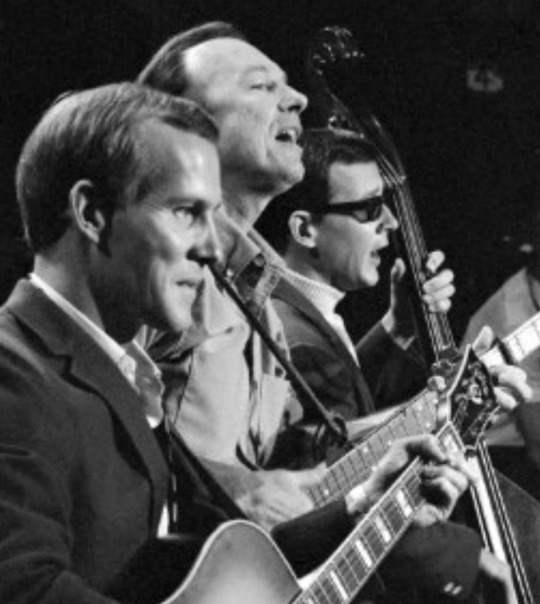
Tommy and Dick Smothers with Pete Seeger on the "Smothers Brothers Comedy Hour" 1967
I was saddened today to see that Tommy Smothers had died. He was the brains behind what I think of as the coolest, hippest show broadcast on American television, definitely of its era and possible of all time. The Smothers Brothers Comedy Hour played a huge role in my consciousness as a kid, both as rad entertainment and as a way to provoke thought. This particular episode was Pete Seeger's first appearance on national television since he was blacklisted during the anti-communist McCarthyist frenzy of the 1950s. Needless to say, Pete sang a song with an anti-Vietnam War message, "Waist Deep in the Big Muddy," and CBS, the network on which the Smothers Brothers show was broadcast, cut the segment out before broadcast. Both of the brothers, but particularly Tommy, were very vocal in defending Seeger and criticizing CBS and the network finally relented (since the Smothers Brothers was a top-rated show) and Pete was booked again. He sang the same song in 1968, and this time it was broadcast and lo and behold, the earth didn't come to an end. Because of the Brothers use of progressive topical humor, their open support for the anti-war movement, their support for civil rights struggles, their support for the then young and avant-garde comedians and writers who populated their show, their frequent use of drug-related humor (it was the 60s, after all) and their booking of rock and soul musical acts geared toward a young audience, the network canceled their show after only 3 seasons, even though it remained very highly rated and extremely popular.
"Freedom of expression and freedom of speech aren't really important unless they're heard. The freedom of hearing is as important as the freedom of speaking... The ultimate censorship is the flick of the dial." Tommy Smothers on the CBS censorship of the Smothers Brothers Comedy Hour
And here's a joke of his from the Smothers Brothers Comedy Hour that I've remembered since I was a kid (and which, of course, got Tommy into more censorship trouble):
"Easter is when Jesus comes out of his tomb, and if he sees his shadow he goes back in, and we get six more weeks of winter."
Tom Smothers - 1937-2023 - Ave atque Vale
85 notes
·
View notes
Note
Zoomer Huey, I tend to see people saying why Gen z don’t have sex much.
Holy
Fucking
Shits
These journalists surprisedly have WORSE self awareness than there boomer relatives
Here a hint https://x.com/swannmarcus89/status/1762582001507323991?s=46
And gender dynamics are…nuked in the fields they are surveying. Women and girls are told that all men are predators and misandry is left unchecked
Also, why Hollywood act surprised about the sex abuse?
We all heard about the casting coach, and how suspiciously people from working class backgrounds like Micheal Jackson (yes his dad had his music connections. But essentially mj was a slave and was arguably was the first black child star unless I’m missing someone) and Walt Disney (though not as bad) are painted as monsters while the actual monsters are protected for decades
I mean look at Judy Garland, she was a sweet person and she did help the LBGT in Hollywood and supported the civil rights movement
But her “crazy” behavior makes more sense because she was sexually abused at a extremely young age
And she not the only one, Shirley Temple, the boy who played at the first LA Dennis the Manis
Oh and the Peter Pan actor (a lot of people leave out the part where ALL of Hollywood basically says he can choke and die because he was “too” Disney)
But sorry about the Gen stuff, but the false rape accusations, maybe if you guys didn’t view men (especially white ones) the same way Nazis viewed the Jews while saying all the working class men were Weinstein.
My Gen would have more sex
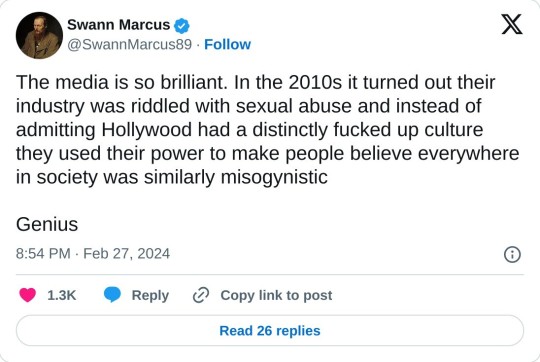
Entertainment industry has been like that since the beginning of forever, probably less so when women weren't allowed to participate but still a thing I'm sure.
As for Judy Garland it was nice to see people come out swinging in her defense when someone tried to start shit over well
She was not in control of her carer, saying no was not an option for her with this, but dumbasses that can only think in terms of today's standards never think about that.
Jay North (Dennis the Menace) did ok, so did Shirley Temple, plenty of others not so much, more recently we can look at Drew Barrymore and RDJ who both had fairly public meltdowns and problems.
Drew was ruined since her first film was ET and Spielberg takes care of the kids on set, going beyond the legal requirements.
Bobby Driscol was the Peter Pan VA top of his Wiki article.
Robert "Bobby" Cletus Driscoll (March 3, 1937 – c. March 30, 1968) was an American actor who performed on film and television from 1943 to 1960. He starred in some of the Walt Disney Studios' best-known live-action pictures of that period: Song of the South (1946), So Dear to My Heart (1949), and Treasure Island (1950), as well as RKO's The Window (1949). He served as the animation model and provided the voice for the title role in Peter Pan (1953). He received an Academy Juvenile Award for outstanding performances in So Dear to My Heart and The Window.
He just fell into the child actor pit, where he wasn't "cute" anymore couldn't get gigs and couldn't adjust to not being in the spotlight, the way he went and nobody knowing is awful to think about still.
Jackie Coogan, on the other hand was a different story.
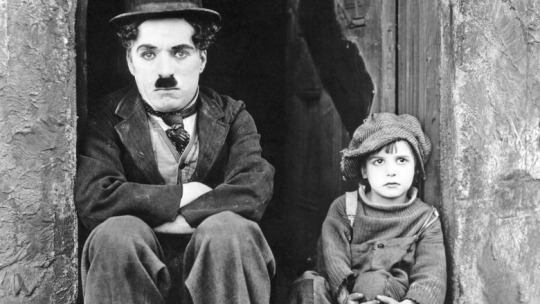
His parents sucked and as a result there's a series of laws named after him California's Coogan Law all about protecting the earnings of child actors from their parents. % goes into a trust iirc.
He ended up OK in the end though

The false accusation thing, #me too hurt women because #believe women was taken advantage of to such a degree that even this coming out to light
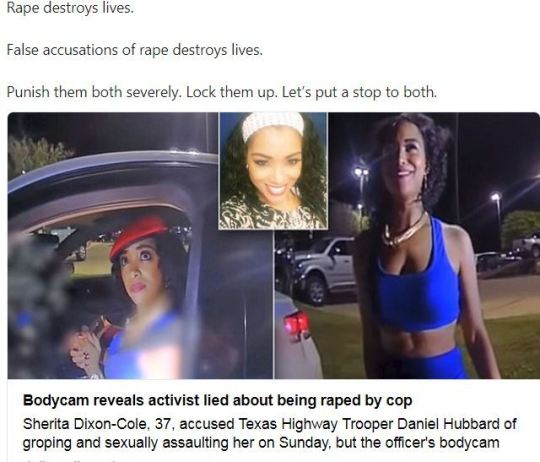
has still probably not cleared up for the trooper, and men are opting to not mentor women because of not wanting to risk a false accusation, everyone screams about how rare they are, to which I say so what, why should they assume the risk even if it's minor
Former VP Mike Pence came out and said he won't be alone with a woman that's not his wife in order to ensure that there is no possibility of someone making a claim of impropriety.
And he got this response
Why is anyone going to put their neck on the line when something like what he said is going to get this kind of response.
Maybe instead of crying about how rare false accusations are they should focus on shaming the people making them and coming up with solutions to keep them from happening.
You know instead of blaming the victims of the false accusations.
All this and so much more going on that isn't in this ask goes to the I don't blame people for not having as much sex, it's actually kinda nice too, fewer std's this way.
I went on a couple tangents, hope that's ok
47 notes
·
View notes
Text
https://www.washingtonpost.com/opinions/2023/10/12/southern-strategy-kevin-phillips-republican-party-trump/
Opinion The GOP’s ‘southern strategy’ mastermind just died. Here’s his legacy.
Greg Sargent
“The whole secret of politics is knowing who hates who.”
That insight was the brainchild of Kevin Phillips, the longtime political analyst who passed away this week at 82 years old. Phillips’s 1969 book, “The Emerging Republican Majority,” provided the blueprint for the “southern strategy” that the Republican Party adopted for decades to win over White voters who were alienated by the Democratic Party’s embrace of civil rights in the 1960s.
Phillips advised Republicans to exploit the racial anxieties of White voters, linking them directly to issues such as crime, federal spending and voting rights. The strategy, beginning with Richard M. Nixon’s landslide victory in the 1972 presidential race, helped produce GOP majorities for decades.
Though Phillips later reconsidered his fealty to the GOP, updated versions of the “southern strategy” live on in today’s Republican Party, shaping the political world we inhabit today. So I asked historians and political theorists to weigh in on Phillips’s legacy. Their responses have been edited for style and brevity.
Kevin Kruse, historian at Princeton University and co-editor of “Myth America”: Kevin Phillips was a prophet of today’s polarization. He drew a blueprint for a major realignment of American politics that is still with us. For much of the 20th century, Democrats dominated the national scene, because of the reliable support of the “Solid South.”
But the “Negro problem” of the 1960s, Phillips argued, presented Republicans an opportunity to take the South and Southwest, too, a new region he anointed “the Sun Belt.” All they had to do was appeal to the hatreds of White voters there, through racially coded “law and order” appeals.
Phillips, of course, proved correct about the regional realignment. Republicans won every single state in the South in the 1972, 1984, 1988, 2000 and 2004 presidential campaigns. Today, Republicans dominate the region partly because they still employ Phillips’s polarizing politics of resentment and reaction, from complaints about Black Lives Matter to panics about “woke” education. Donald Trump’s continued dominance of the GOP shows that the underlying instinct to exploit division and inflame hatred remains.
Nicole Hemmer, author of “Partisans: The Conservative Revolutionaries who Remade American Politics in the 1990s”: Phillips helped shape how the Republican Party navigated the last 50 years of U.S. politics. His big contribution was the idea that White southerners could be potential voters for the GOP, because the solid Democratic South had become newly fractured after President Lyndon B. Johnson signed the Civil Rights Act and the Voting Rights Act.
Phillips argued that the Republican Party needed to change the way it conducted politics to reach out to disaffected White southerners. For Nixon, that was “law and order,” something Ronald Reagan used to great effect along with stories about “welfare queens.” George H.W. Bush’s campaign ran the “Willie Horton” ad, which played up fears of Black criminality.
Trump picked up this rhetoric. He launched his campaign on the ideas of Mexican migrant and Muslim criminality — that all these minority populations needed to be under much stricter surveillance.
The strategy that Phillips helped popularize worked just as well with some northern White voters as it did with southern White voters. It helped solidify the Republican Party’s base as almost exclusively White even as the nation has grown more diverse.
Bill Kristol, a former Republican turned Never Trump conservative: It was happening already in 1968, but Phillips’s book and his subsequent promotion of the southern strategy did have the effect of making that reaction to the civil rights movement more coherent. It gave politicians a way to think about shaping that reaction politically.
Newt Gingrich, who defeated lots of Democrats in southern House seats in the 1994 midterms, was in spirit a Phillips protégé. That culminated in 2010, when Democrats got obliterated, and in the red state-blue state divide today.
From Phillips to Ron DeSantis and Greg Abbott, there is a through line. DeSantis, Abbott and others are operating in a world anticipated and partly created by Phillips. The reaction of much of the White working class and Republican politicians to Black Lives Matter and “cosmopolitan elites” is a close cousin of what Phillips predicted and helped shape.
Michael Barone, senior political analyst for the Washington Examiner: I think Phillips was noticing what was happening rather than causing it to happen. Dwight D. Eisenhower got 49 to 50 percent of the popular vote in the South in 1952 and 1956; Nixon got nearly that much in 1960. When the national Democratic Party became more dovish, circa 1967, reacting against the Vietnam escalations of its own presidents, Southern Whites — always the most hawkish voters — turned away from national Democrats not so much because of civil rights but because of dovishness. It’s what Tom Eagleton later told Robert Novak: “acid, amnesty, and abortion.”
Corey Robin, political theorist and author of “The Reactionary Mind”: Phillips understood that the old Republican Party establishment could not begin to take on the New Deal and Great Society until it developed a mass popular base. He saw that the White working class — not just in the South, but in the North — was growing disaffected with the New Deal on economic and racist grounds, and that Republicans could turn that dissatisfaction into governing majorities.
Beginning in 1972 with the reelection of Nixon, Republicans built this majority in the spirit of what Phillips imagined. George W. Bush, the last Republican president to get a popular majority, was the last spasm of that vision. The irony is that, under Phillips, the idea was to expand the Republican Party into a permanent governing majority.
But once the White working class diminished, the electoral return of that resentment dramatically dwindled. As a result, instead of relying on robust electoral majorities, the Republican Party, to win power, relies on the electoral college and the malapportioned Senate. Phillips’s blueprint made the heyday of Republican power — and ultimately unmade it.
58 notes
·
View notes
Text


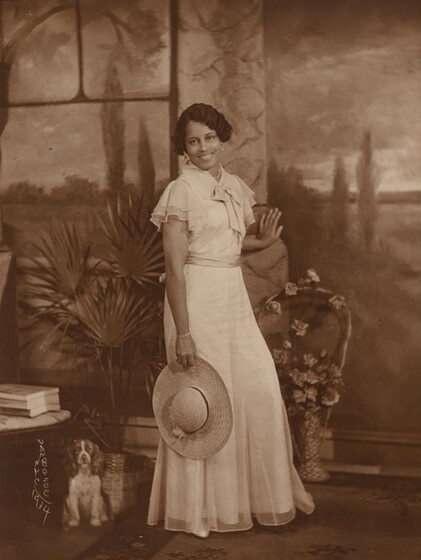




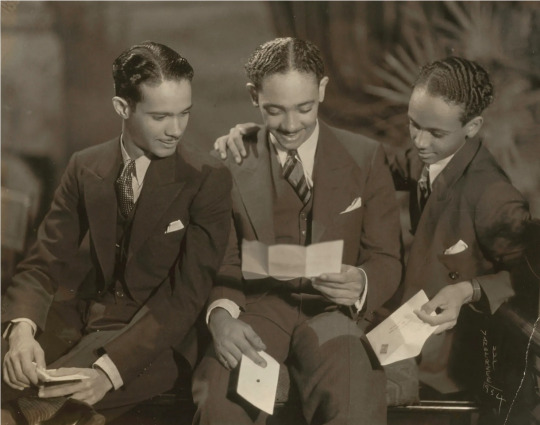
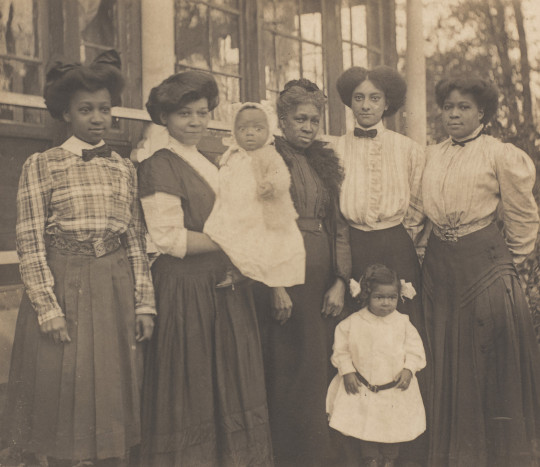
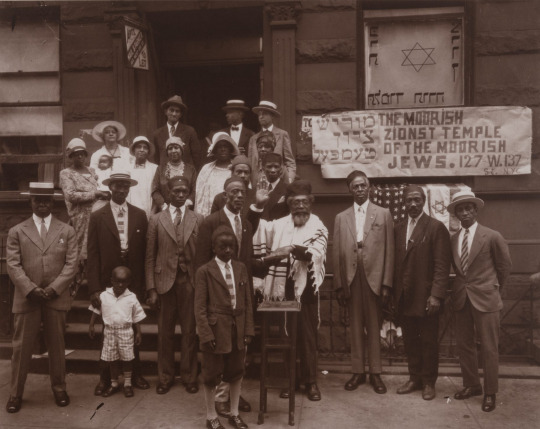
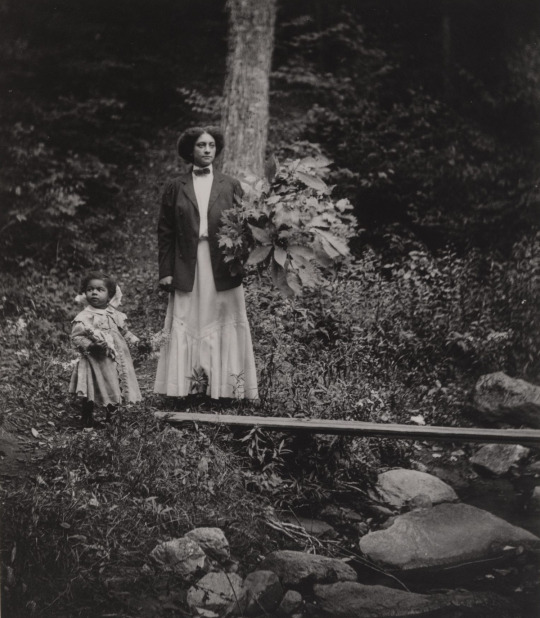
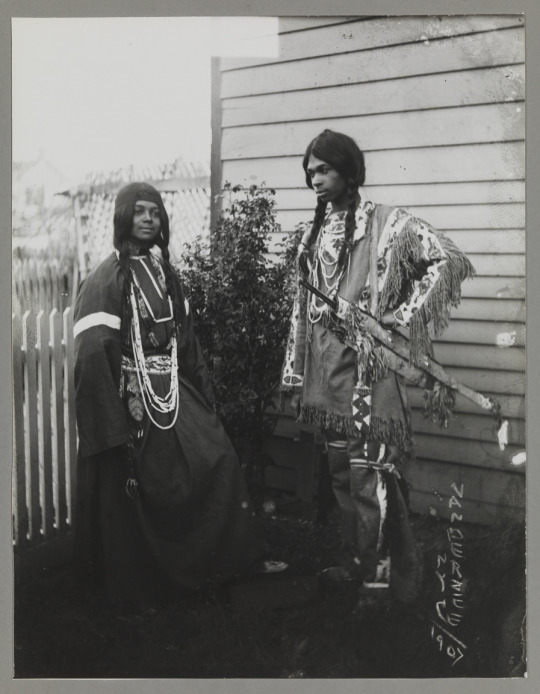

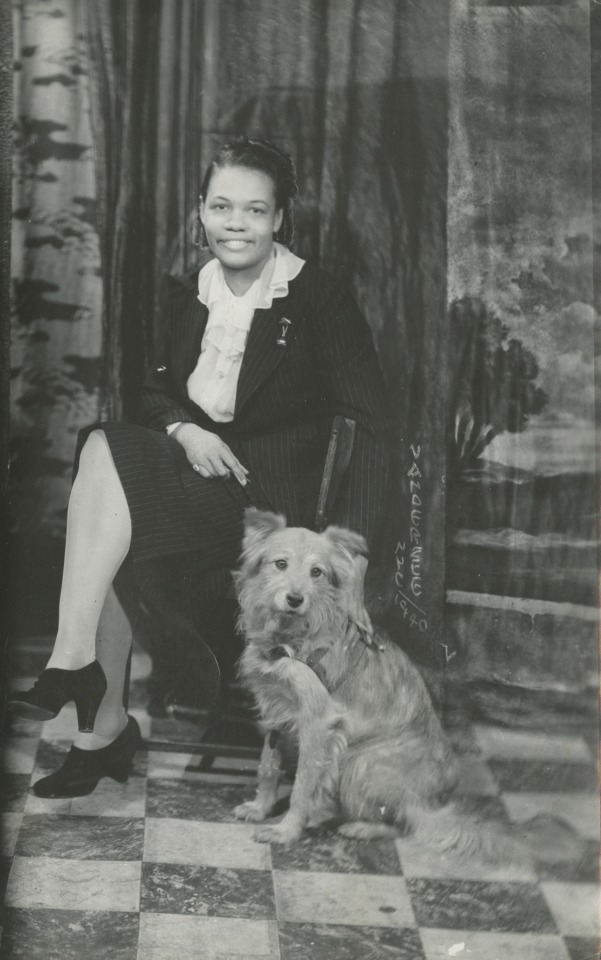
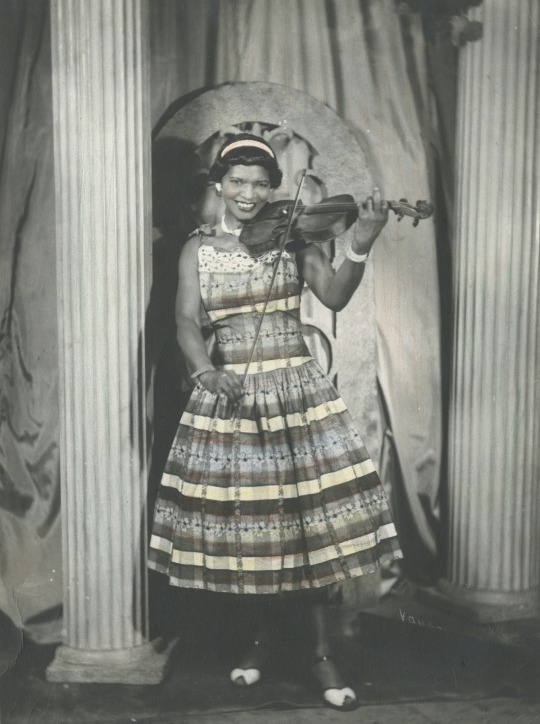

Black photographer James Van Der Zee established himself in Harlem, New York where he opened a portrait studio, intermittently from 1916 until 1968. His decades of documentation reveal the intimate lives of Black New York during some of its most significant cultural moments, including the Harlem Renaissance. During the 1920s, Van Der Zee work drew Black couples and families to his studio, showing the diverse experiences of of the rising Black middle (or upper working) class. He photographed Harlem residents in their homes, churches, and social clubs, providing an intimate look into the lives and labor one of America's most well-know, historic Black communities.
He lived to be almost 100, a Black man born into freedom, grew up during the collapse of Reconstruction, and lived to see the Civil Rights Act passed . . .
It’s a hard job to get the camera to see it like you see it. Sometimes you have it just the way you want it, and then you look in the camera and you don’t have the balance. The main thing is to get the camera to see it the way you see it. ~ Van Der Zee
(1) Beau of the ball (1926)
(2) Alpha Phi Alpha Basketball Team (1926)
(3) Lady with Wide-Brimmed Straw Hat w/ Dog (1934)
(4) A woman poses in Van Der Zee's studio (1920)
(5) A smiling couple (1930)
(6) Members of the Benevolent and Protective Order of Elks parade in Harlem (1931)
(7) Another Parade in Harlem (1924-26)
(8) Three men sit together reading through letters (1934)
(9) Women and children pose on Lenox Avenue (1909)
(10) The Black Jewish community of Harlem (1929)
(11) Kate and Rachel Van Der Zee explore the wilderness of Lennox, Massachusetts (1907)
(12) A Native American (possibly afroindigenous) Couple (1907)
(13) Nude with Butterfly (1936)
(14) A woman smiles her best friend (1940s)
(15) A violinist (1956)
(16) Jean-Michel Basquiat (1982)
Source: National Gallery of Art | Pennsylvania Academy of the Fine Arts
68 notes
·
View notes
Text
Atrocities US committed against NATIVE AMERICANS
In 2016, the US army corp of engineers approved a Energy Transfer Partners’ proposal to build an oil pipeline near the Standing Rock Indian Reservation, sparking the Dakota Access Pipeline Protests, evoking a brutal response from North Dakota police aided by the National Guard, private security firms, and other law enforcement agencies from surrounding states. The Standing Rock Sioux tribe believes that the pipeline would put the Missouri River, the water source for the reservation, at risk, pointing out two recent spills, a 2010 pipeline spill into the Kalamazoo River in Michigan, which cost over billion to clean up with significant contamination remaining, and a 2015 Bakken crude oil spill into the Yellowstone River in Montana. Police repression has included dogs attacking protesters, spraying water cannons on protesters in sub-freezing temperatures, >700 arrests of Native Americans and ~200 injuries, a highly militarized police force using armored personnel carriers, concussion grenades, mace, Tasers, batons, rubber bullets, and tear gas. In November 2017, the keystone XL pipeline burst, spilling 210,000 gallons of oil in Amherst, South Dakota.
In 1975, FBI agents attacked AIM activists on the Pine Ridge Reservation, in the ‘Pine Ridge Shootout’. Two FBI agents, and an AIM activist were killed. In two separate trials, the U.S. prosecuted participants in the firefight for the deaths of the agents. AIM members Robert Robideau and Dino Butler were acquitted after asserting that they had acted in self–defense. Leonard Peltier was extradited from Canada and tried separately because of the delay. He was convicted on two counts of first–degree murder for the deaths of the FBI agents and sentenced to two consecutive terms of life in prison, after a trial which is still contentious. He remains in prison.
In 1973, 200 Oglala Lakota and AIM activists occupied the town of Wounded Knee, South Dakota, on the Pine Ridge Reservation, called the Wounded knee incident. They were protesting the reservation’s corrupt US-backed tribal chairman, Dick Wilson, who controlled a private militia, called Guardians of the Oglala Nation (GOONs), funded by the government. FBI, US marshals, and other law enforcement cordoned off the area and attacked the activists with armored vehicles, automatic rifles, machine guns, grenade launchers, and gas shells, resulting in two killed and 13 wounded. Ray Robinson, a civil rights activist who joined the protesters, disappeared during the events and is believed to have been murdered. As food supplies became short, three planes dropped 1,200 pounds of food, but as people scrambled to gather it up, a government helicopter appeared overhead and fired down on them while groundfire came from all sides. After the siege ended in a truce, 120 occupiers were arrested. Wilson stayed in office and in 1974 was re-elected amid charges of intimidation, voter fraud, and other abuses. The rate of violence climbed on the reservation as conflict opened between political factions in the following three years; residents accused Wilson’s private militia of much of it.
In Nov. 1969, a group of 89 Native Americans occupied Alcatraz Island for 15 months, to gauge the US’s commitment to the Treaty of Fort Laramie (1868), which stated that all abandoned federal land must be returned to native people. Eventually the government cut off all electrical power and all telephone service to the island. In June, a fire of disputed origin destroyed numerous buildings on the island. Left without power, fresh water, and in the face of diminishing public support and sympathy, the number of occupiers began to dwindle. On June 11, 1971, a large force of government officers removed the remaining 15 people from the island.
From its creation in 1968, The American Indian Movement (AIM) has been a target of repression from law enforcement agencies, and surveillance as one of the FBI’s COINTELPRO targets. This includes the wounded knee incident and the pine ridge shootout.
In 1942 the federal government took privately held Pine Ridge Indian Reservation land owned by tribal members in order to establish the Badlands Bombing Range of 341,725 acres, evicting 125 families. Among the families evicted was that of Pat Cuny, an Oglala Sioux. He fought in World War II in the Battle of the Bulge after surviving torpedoing of his transport in the English Channel. Dewey Beard, a Miniconjou Sioux survivor of the Wounded Knee Massacre, who supported himself by raising horses on his 908-acre allotment received in 1907 was also evicted. The small federal payments were insufficient to enable such persons to buy new properties. In 1955 the 97-year-old Beard testified of earlier mistreatment at Congressional hearings about this project. He said, for “fifty years I have been kicked around. Today there is a hard winter coming. …I might starve to death.”
In 1890, US soldiers killed 150-300 people (including 65 women and 24 children) at Wounded Knee (19-26 people, including two women and eleven children.) on the Lakota Pine Ridge Indian Reservation in the U.S. state of South Dakota. Twenty-five soldiers also died, and 39 were wounded (6 of the wounded later died). At least twenty soldiers were awarded the Medal of Honor. The event was driven by local racism towards the practice of Ghost Dancing, which whites found distasteful, and the Native Americans arming up in response to repeated broken treaties, stolen land, and their bison-herds being hunted to near extinction by the whites.
In 1887, the Dawes Act, and Curtis Act, resulted in the loss of 90 million acres of native-alloted land, and the abolition of many native governments. During the ensuing decades, the Five Civilized Tribes lost 90 million acres of former communal lands, which were sold to non-Natives. In addition, many individuals, unfamiliar with land ownership, became the target of speculators and criminals, were stuck with allotments that were too small for profitable farming, and lost their household lands. Tribe members also suffered from the breakdown of the social structure of the tribes.
Starting in the 1870s, The US army, aided by settlers and private hunters, began a widespread policy of slaughtering bufallo and bison, in order to destroy many tribe’s primary food source, and to starve Native Americans into submission. By 1900, they succeeded; the bufallo population dropped from more than 30 million, to a few hundred. The country’s highest generals, politicians, and presidents including Ulysses S. Grant, saw the destruction of buffalo as solution to the country’s “Indian Problem.” By destroying the food supply of the plains natives, they could more easily move them onto reservations.
Starting in 1830-50, The Trail of Tears was a series of forced removals of Native American nations, including Chickasaw, Choctaw, Creek, Seminole, Cherokee people and the African freedmen and slaves who lived among them, from their ancestral homelands in the Southeastern United States to an area west of the Mississippi River that had been designated as Native Territory. The forced relocations were carried out by various government authorities following the passage of the Indian Removal Act in 1830. “Marshaled by guards, hustled by agents, harried by contractors,they were being herded on the way to an unknown and unwelcome destination like a flock of sick sheep.” They went on ox wagons, on horses, on foot, then to be ferried across the MississippiRiver. The army was supposed to organize their trek, but it turned over its job to private contractors who charged the government as much as possible, gave the Indians as little as possible. The Cherokee removal in 1838 (the last forced removal east of the Mississippi) was brought on by the discovery of gold near Dahlonega, Georgia in 1828, resulting in the Georgia Gold Rush. Approximately 2,000-6,000 of the 16,543 relocated Cherokee perished along the way.
In 1848, the California Genocide is a term used to describe the drastic decrease in Native American population in California. The population decreased from ~300,000 in 1769, to 16,000 in 1900.
The Second Seminole War, also known as the Florida War, was a conflict from 1835 to 1842 in Florida between various groups of Native Americans collectively known as Seminoles and the United States, part of a series of conflicts called the Seminole Wars. The Second Seminole War, often referred to as the Seminole War, is regarded as “the longest and most costly of the Indian conflicts of the United States.” ~3000 seminoles were killed, and 4000 were deported to Indian territory elsewhere.
In 1832, the Black Hawk War, was a brief 1832 conflict between the United States and Native Americans led by Black Hawk, a Sauk leader, in Illinois. The war gave impetus to the US policy of Indian removal, in which Native American tribes were pressured to sell their lands and move west of the Mississippi River and stay there. Over 500 Native Americans were killed in the conflict.
In 1832, the Chickasaw Indians were forced by the US to sell their country in 1832 and move to Indian Territory (Oklahoma) during the era of Indian Removal in the 1830s.
In 1813, the Creek War, was a war between the US, lead by the then notorious indian-hunter Andrew Jackson, and the Creek nation, residing primarily in Alabama. Over 1,500 creeks were killed. The war effectively ended with the Treaty of Fort Jackson, where General Andrew Jackson insisted that the Creek confederacy cede more than 21 million acres of land from southern Georgia and central Alabama. These lands were taken from allied Creek as well as Red Sticks. In 1814, Andrew Jackson became famous for his role in the Battle of Horseshoe Bend, where his side killed more than 800 Creeks. Under Jackson, and the man he chose to succeed him, Martin Van Buren, 70,000 Indians east of the Mississippi were forced westward.
The Red Sticks, a faction of Muscogee Creek people in the American Southeast, led a resistance movement against European-American encroachment and assimilation; tensions culminated in the outbreak of the Creek War in 1813.
From 1785-96, the Northwest Indian War was a war between the US and a confederation of numerous Native American tribes, with support from the British, for control of the Northwest Territory. President George Washington directed the United States Army to enforce U.S. sovereignty over the territory. Over 1,000 Native Americans were killed in the bloody conflict.
In the 1800s, Indian removal was a policy of the United States government whereby Native Americans were forcibly removed from their ancestral homelands in the eastern United States to lands west of the Mississippi River, thereafter known as Indian Territory. That policy has been characterized by some scholars as part of a long-term genocide of Native Americans.
The Texan-Indian Wars were a series of 19th-century conflicts between settlers in Texas and the Southern Plains Indians. Its hard to approximate the number of deaths from the conflicts, but the Indian population in Texas decreased from 20,000 to 8,000 by 1875.
The Indian Wars is a name given to the collection of over 40 conflicts and wars between Native Americans and US settlers. The US census bureau reports that they have cost the lives of about 19,000 white men, women and children, including those killed in individual combats, and the lives of about 30,000 Indians. The actual number of killed and wounded Indians must be very much higher than the number given… Fifty percent additional would be a safe estimate.
From 1500-1900s, European and later US colonists and authorities displaced and committed genocide on the Native American Population. Ward Churchill characterizes the reduction of the North American Indian population from an estimated 12 million in 1500 to barely 237,000 in 1900 as a “vast genocide.. the most sustained on record.
#anti capitalism#socialism#leftism#anarchy#communism#late stage capitalism#classism#economics#inequality#capitalism#current events#us healthcare#us house of representatives#us history#us hegemony#anti imperialism#imperialism#anti capitalist love notes#tweet#anti capitalists be like#anti capatilism#native american#killers of the flower moon
29 notes
·
View notes
Note
You are an LBJ apologist
Here is a small selection of LBJ's legislative accomplishments during his five years and two months as President:
•Clean Air Act of 1963
•Food Stamp Act of 1964
•Civil Rights Act of 1964
•Creation of Equal Employment Opportunity Commission (1964)
•Economic Opportunity Act of 1964 (Creation of Head Start, Job Corps, and Community Action Programs)
•Elementary and Secondary Education Act of 1965
•Higher Education Act of 1965 (Creation of Teacher Corps and Upward Bound)
•National Endowment for the Arts
ªNational Endowment for the Humanities
ªImmigration and Nationality Act of 1965
•Social Security Amendments of 1965 (Creation of Medicare and Medicaid)
•Older Americans Act of 1965
•Creation of the Model Cities Program (1965)
•Child Nutrition Act of 1965 (Creation of school breakfast programs)
•Voting Rights Act of 1965
•Creation of VISTA (now part of AmeriCorps) (1965)
•Motor Vehicle Safety Act of 1966 (Creation of the National Highway Traffic Safety Administration)
•Fair Packaging and Labeling Act of 1966
•Child Safety Act of 1966
•Public Broadcasting Act of 1967 (Creation of PBS, NPR, and the Corporation for Public Broadcasting)
•Wholesome Meat Act of 1967
•Architectural Barriers Act of 1968 (Early disability access to public buildings law)
•Truth-In-Lending Act (1968)
•Gun Control Act of 1968
•Bilingual Education Act of 1968
•Civil Rights Act of 1968 (Fair Housing Act, Indian Civil Rights Act, and creation of Federal hate crime laws)
•Housing and Urban Development Act of 1968
So, yeah, guilty as charged.
Here are more landmark laws from the LBJ years, courtesy of the fine folks over at the @lbjlibrary.
#History#Lyndon B. Johnson#LBJ#Great Society#President Johnson#Johnson Administration#Voting Rights Act#Civil Rights Act of 1964#Civil Rights#Medicare#Medicaid#Social Security#Fair Housing Act#Life-changing Legislation#5 years and 59 days#LBJ Library
45 notes
·
View notes
Text
1981 Sure Was A Year in Indiana
This post initially started in my head when I was puzzling over what school in 1959 might look like in The First Shadow (perks of a 90 minute drive to work: I was liable to do way too much thinking). However, the more I dug into the subject, the more Lucas started jumping out at me.
Specifically: Lucas and school buses started jumping out at me.
So, when I started this analysis back in July, I was sitting in a corn field (legit) trying to figure out exactly how I want to approach this, because it's another case of the Duffers underpinning a character's experience with the supernatural with the real sociopolitical aspects of the time period.
I say this started out with The First Shadow because of three specific characters: First, it was "Betty Olsen" (read: Patty Newby). Now, Sue Anderson (Sinclair), and Charles Sinclair have joined her in my concerns. If you know anything about America, you at least know that the 1950s-1970s were a time of major political upheaval. Namely, the Civil Rights Movement was just occurring during this time. I had, and still have, concerns about how the writers of The First Shadow are planning to handle school in the show.
However, this detail about Lucas's experiences makes me retain a sliver of hope that they won't fuck it up completely.
As such, I'd like to give a quick history lesson as background for anyone who may not know much about US history.
Despite adopting pro-integration language in 1949, Indiana's school desegregation process concluded 5 years later, in compliance with Brown v. Board of Education (1954). Due to the large Ku Klux Klan presence in its government, Indiana was the last non-confederate state to adopt pro-integration language, and it remained largely segregated despite Brown v. Board of Education due to discriminatory housing policies and wealth gaps between its black and white residents.
So, Brown v. Board of Education was not enough to drive integration of schools in Indiana. That task required legal pushes from cases like Bell v. School City of Gary (1963) and Banks v. Muncie Community Schools (1970). In fact, it was such a struggle to get Indiana to integrate that the U.S. Department of Justice had to get involved, filing its first (of many) lawsuits against Indianapolis Public Schools in 1968. These lawsuits would continue into the 1990s.
Most importantly for the coming analysis, though, is Swann v. Charlotte-Mecklenburg Board of Education (1971), which gained footing via the Civil Rights Act of 1964. Swann v. Charlotte-Mecklenburg Board of Education was a landmark US Supreme Court case which argued that federally supported busing would be an effective pro-integration effort with the aim of making opportunities for equal education more widely accessible in the face of redlining's aftermath. Federally supported busing was implemented in 1971.
However, Indiana did not take up federal busing until 1981, an entire decade later. Even then, requirements were uneven (specifically: black children were to bus to white schools, and not vice-versa) and have generated lasting negative impacts on communities of color, such as community destruction and worse segregation now than before (as per UCLA's 2017 Civil Rights Project study conducted in conjunction with IU School of Education's Center for Evaluation and Education Policy).
This is where history talk ends and my analysis begins.
All of this information was a couple of well placed GoogIe searches away, which means: If I can find it, so can the writers.
What's stood out to me most is that, despite not busing to school, Lucas keeps ending up around buses.
Namely, Lucas keeps ending up in life-threatening situations on or near school buses. He and El (a superpowered and highly reactive white girl) have their fight in front of the junkyard school bus. He's harmed in this situation, knocked unconscious for several seconds. Then, later in the season, Lucas and the gang hide in that school bus when HNL is hunting them down, intent on arresting or killing them. In ST2, Lucas ends up in that same school bus during the demodog attack.
Max, then, buses to school in ST4. This is linked to Billy's death, given that he was her ride to school in ST2 and that his death was the reason she was forced into poverty/living in the trailer park farther from the center of town. This directly plays into her unfortunate fate in ST4, which is incredibly traumatic for Lucas and carries quite a bit of racial tension (see: Jason and his groupies, the placement of a black boy being seen as harming a white girl and being beaten for it, Erica being attacked simultaneously simply for being in a playground after curfew while having a tenuous link to our white suspect, Eddie).
None of these are good, safe, or comfortable experiences.
There's only one good experience happening on or near a school bus: Lucas and Max's first heart-to-heart as an interracial couple happens on top of the junkyard school bus.
Even then, it's still tainted a life-threatening situation and the two of discussing how much of an asshole Billy is. Billy, whose racism shines through quite clearly in his treatment of Lucas and his perception of lumax as an interracial couple.
Supernatural life-or-death danger, and specifically anti-blackness, become linked to school buses around the same time that bus integration becomes prominent as an integration strategy in Indiana. Despite not busing himself, Lucas faces his life or death situations most often on a school bus. Bus integration was a major controversy in the path to school integration, and buses were massively unsafe for black students, particularly those in more conservative areas. Thus, the supernatural becomes subtext for the cultural climate of Hawkins: Unsafe for black families, the danger typically lingering just under a veneer of acceptance.
We see this brought to light more blatantly in ST4 with Lucas's experiences surrounding Jason. Jason is "normal". He's a "good kid". He's not Billy, the rough-around-the-edges trouble maker. He's Jason Everyman, shining star of the basketball team and a "friend" to Lucas. His violence lingers just under that veneer of normalcy and acceptance, ready to lash out as soon as Lucas does something he doesn't agree with, and that much is made brutally clear (many say tactlessly, I'm inclined to agree, especially if we extend this scenario to encompass Erica's experiences too). Once again, the supernatural underpins reality. The life-or-death situation with Vecna is inextricably linked to Jason's violence. A villain that lingers beneath the surface of Hawkins and is emerging from the town's depths underpins the previously undisclosed normalized racial violence now appearing on screen.
This is by no means me saying they've handled this gracefully. They haven't. I agree that Billy's arc re: Lucas and lumax, as well as the Sinclair siblings' treatment in Season 4, were both handled poorly.
The above remains the basis of my concerns regarding The First Shadow.
They're tactless and painfully tone-deaf, definitely...but they also don't seem to be unaware of the political climate in 1980s Indiana.
#tw racism#tw antiblackness#tw racial violence#lucas sinclair#stranger things#stranger things: the first shadow
29 notes
·
View notes
Text

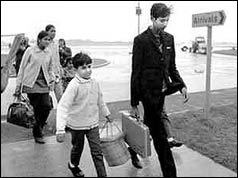
On 18th September 1972, BBC News reported that the first 193 Ugandan refugees, fleeing persecution by the country’s military dictatorship, had arrived at Stansted Airport, Essex. Over half of the arrivals had British passports, and housing and immediate needs would be overseen by the Ugandan Resettlement Board.
Uganda’s Asian community, numbering around 55 000, many of whom ran family businesses and small enterprise, were ordered in August 1972 to leave the country within 90 days by President Idi Amin. Amin had publicly denounced Ugandan Asians as ‘bloodsuckers’, threatening that any who had not left by the arbitrary deadline of November 8th would be interned in military detention camps.
Many of the initial flight of refugees had endured frightening experiences prior to their departure from Uganda, at the hands of Amin’s troops. "On the way to the airport the coach was stopped by troops seven times, and we were all held at gun point," one refugee told reporters. Another stated that he had been robbed of personal valuables and Ugandan currency on the way to Entebbe airport.
News reports at the time cited some opposition within the UK over the acceptance of the Ugandan Asians. The Leicester local authority mounted a newspaper campaign urging refugees not to come to their region seeking jobs and housing. The BBC asserted that, in hindsight, the resettlement programme was seen as ‘a success story for British Immigration’.
The loss of the hardworking and successful Ugandan Asian community devastated Uganda’s agriculture, manufacturing and commerce. Idi Amin was deposed in 1979 and died in Jeddah in 2003, having been responsible for the deaths of as many as 300 000 Ugandan civilians during his reign of terror as President. In 1991, Ugandan President Yoweri Museveni invited the expelled community to return home to help rebuild the economy.
The Wilson Labour government also had to grapple with a refugee crisis from a former African colony.
In February 1968, BBC news reported;
"…Another 96 Indians and Pakistanis from Kenya have arrived in Britain, the latest in a growing exodus of Kenyan Asians fleeing from laws which prevent them making a living…"
Many Asian people living in Kenya had not taken up Kenyan citizenship following the country’s independence from Britain in 1963, but possessed British passports. Under Kenya’s Africanisation policy, non-citizens required work permits, and were being removed from employment in favour of Kenyan nationals. There was growing public demand for laws to prevent non-citizens from owning businesses or even operating as street and market traders. As a result, British passport holders were leaving Kenya at the rate of 1000 per month, leaving a huge deficit in skills and experience within the business community and civil service.
Fearing a backlash over the large numbers of Asian immigrants, Home Secretary, and future Prime Minister, James Callaghan, rushed through the Commonwealth Immigration Act, which made it a requirement that prospective immigrants must have a 'close connection' with Britain.
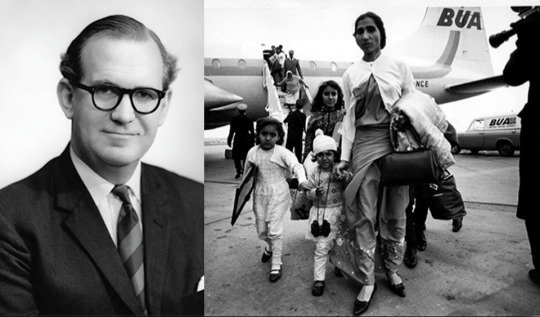
This led to disagreement in Cabinet, with Secretary of State for Commonwealth Affairs, George Thomson (1921-2008) arguing;
"…To pass such legislation would be wrong in principle, clearly discrimination on the grounds of colour, and contrary to everything we stand for…"
In 1971, the Heath government made further legislative changes that would mean that (some) immigrants from Commonwealth countries would be treated no more favourably than those from the rest of the world, and that tightened restrictions on those who stayed by linking work permits to a specific job and location, requiring registration with police, and reapplication to stay in Britain each 12 months.
The Patrial Right of Abode lifted all restrictions on those immigrants with a direct ancestral connection with Britain.
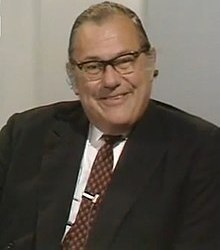
Home Secretary Reginald Maudling (later famous for being smacked in the face by Irish MP Bernadette Devlin, and for having to resign over a corruption scandal linked with disgraced property developer John Poulson) denied that this was, in effect, a 'colour bar', telling the BBC;
"…Of course they are more likely to be white because we have on the whole more whites than coloureds in this country, but there is no colour bar involved…"
Unsurprisingly, not everyone was convinced.
Vishna Sharma, Executive Secretary of the Joint Council for the Welfare of Immigrants, described the bill to BBC News as, "basically racially discriminatory, repressive and divisive," and added, "It will create divisions amongst the Commonwealth citizens already living in this country on patrial and non-patrial basis. It will create day-to-day bureaucracy and interference on people living in this country. It will create more hardship for people wanting to enter into this country."
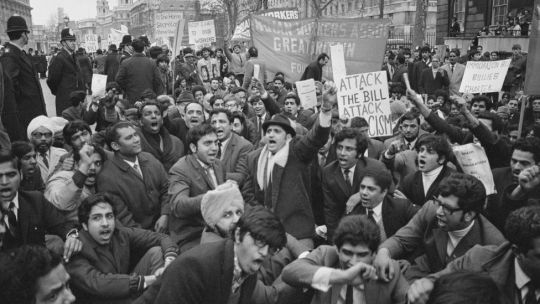
(Source; BBC reporting and history.com. Photo Credits; BBC News)
#social history#uk politics#working class history#social justice#uk government#human rights#uk history#british culture#society#history#race relations#immigration
26 notes
·
View notes
Photo
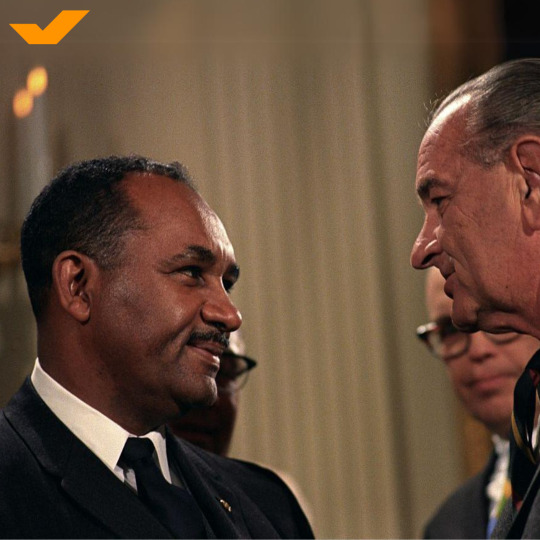

Today marks 40 years since the passing of Clarence Maurice Mitchell Jr., a lifelong champion of equality for Black Americans.
Serving as the NAACP's chief lobbyist for almost 30 years, Mitchell played a key role in passing the historic civil rights legislation of the 1960s, including the Civil Rights Act of 1964, the Voting Rights Act of 1965, and the Fair Housing Act of 1968.
We honor and thank him today for dedicating his life to the fight for equal rights. 🙏🏿
#clarence maurice mitchell jr#clarence mitchell jr#civil rights#voting rights#naacp#civil rights act#voting rights act#fair housing act#equal rights#black americans#1960s
7 notes
·
View notes
Text

Today In History
Hollywood icon, director, activist, and diplomat Sidney Poitier was the first African American to win an Academy Award for Best Actor, receiving the honor in 1964 for his performance in ‘Lilies of the Field.’
Poitier was born in Miami, FL, on this date February 20, 1924-two and a half months prematurely while his parents were on vacation from the Bahamas.
Poitier portrayal of resolute heroes in films like “To Sir With Love,” “In the Heat of the Night” and “Guess Who’s Coming to Dinner” established him as Hollywood’s first Black matinee idol and helped open the door for Black actors in the film industry.
He rose to prominence when the civil rights movement was beginning to make headway in the United States. Although often simmering with repressed anger, his characters responded to injustice with quiet determination. They met hatred with reason and forgiveness, sending a reassuring message to white audiences.
With the rise of Black filmmakers like Gordon Parks and Melvin Van Peebles in the late 1960s and early ’70s, Mr. Poitier, now in his 40s, turned to directing and producing. He had proposed the idea for the romantic comedy “For Love of Ivy” (1968), in which he starred with Abbey Lincoln. After joining with Paul Newman and Barbra Streisand in 1969 to form a production company called First Artists, he directed the western “Buck and the Preacher” (1972), in which he acted opposite Mr. Belafonte, and a series of comedies, notably “Uptown Saturday Night” (1974) and “Let’s Do It Again” (1975), in which Mr. Poitier and Bill Cosby teamed up to play a pair of scheming ne’er-do-wells, and “Stir Crazy” (1980), with Richard Pryor and Gene Wilder.
CARTER™ Magazine
#sidney poitier#carter magazine#carter#historyandhiphop365#wherehistoryandhiphopmeet#history#cartermagazine#today in history#staywoke#blackhistory#blackhistorymonth
107 notes
·
View notes
Text
One cannot discuss The Feminists without first discussing its founder, Ti-Grace Atkinson. Her biography is relevant not only because she so dominated the group while a part of it, but also because it can help illuminate why it was that Atkinson was so invested in being the most radical of all radical feminists. Atkinson was raised in an upper-class, Republican family in Louisiana. After marrying at the age of seventeen, she attended the University of Pennsylvania where she received her B.F.A. While living in Philadelphia she helped establish that city's Institute of Contemporary Art and wrote art criticism for Art News. She and her husband divorced in 1961, and in the mid-60s she moved to New York and enrolled in Columbia's graduate program in political philosophy. When she joined NOW in 1967, at the age of twenty-eight, she was a registered Republican with no prior political experience. However, Atkinson was no novice to feminist ideas. She had read Simone de Beauvoir's The Second Sex in 1962 and, like so many other other women who helped spark the second wave of feminism, she was profoundly affected by it. Feeling isolated, she wrote to de Beauvoir in 1965, who suggested that she write to Betty Friedan. Atkinson did contact Friedan, who initially viewed her as her protégé. Indeed, Friedan claims that it was she who pushed Atkinson into NOW's leadership for she felt that Atkinson's "Main Line accent and ladylike blond good looks would be perfect . . . for raising money from those mythical rich old widows we never did unearth." Before long, however, Friedan discovered that Atkinson was anything but an obedient acolyte.
Atkinson's turbulent relationship with NOW began in February 1967, when she attended the first organizational meeting of the New York chapter. In December 1967 she was elected president of New York NOW, by far the largest and the most radical of all the NOW chapters. Although there were forty-five other chapters, the New York chapter contained thirty percent of the organization’s membership. Kate Millett, author of the 1970 bestseller Sexual Politics, feminist playwright Anselma dell'Olio, and civil-rights lawyer Florynce Kennedy were among the more radical women who belonged to this chapter. As a result of her involvement in NOW, Atkinson met women who politicized her about other forms of oppression and who introduced her to the "more radical factions" at Columbia University during the strike of 1968. As Atkinson puts it, "my feminism radicalized me on other issues, not vice versa."
But as Atkinson became more radical she grew disillusioned with NOW, and the NOW establishment grew increasingly apprehensive about her. From the beginning, Atkinson wanted the organization to take "unequivocal positions . . . on abortion, marriage, the family"—the very issues which many members were anxious that NOW avoid. Increasingly, Atkinson staked out positions that were on the cutting edge of feminism. For instance, abortion-rights activist Cindy Cisler contends that it was Atkinson who first pointed out the inconsistency of supporting both the repeal and the reform of abortion laws. Moreover, Atkinson's involvement with controversial figures like Valerie Solanas and abortion advocate Bill Baird made the NOW establishment extremely uneasy. Her very public show of support for Valerie Solanas in the aftermath of the Warhol shooting infuriated many NOW officers who feared that people might think the organization actually condoned the act. Years later, Friedan was still furious about Atkinson's behavior. "No action of the board of New York NOW, of National NOW, no policy ever voted by the members advocated shooting men in the balls, the elimination of men as proposed by that SCUM Manifesto!" Of course, Atkinson's outrageousness delighted the press who seemed to hang on her every word. As early as March 1968, a New York Times reporter labeled Atkinson the movement's "haute thinker."
The situation came to a head on October 17, 1968, when Atkinson and other "younger dissenting" members tried to bring participatory democracy to NOW. They proposed that NOW scuttle elections and instead choose officers by lot and rotate the positions frequently to equalize power within the organization. However, the New York chapter defeated the proposed by-laws by a two-to-one margin. Atkinson claimed that the speeches given by those opposing the democratization of NOW
“revealed unmistakably that the division in N.O. W. as well as in the feminist movement as a whole is between those who want women to have the opportunity to be oppressors, too, and those who want to destroy oppression itself.”
To Atkinson, the lopsided vote demonstrated beyond a doubt that NOW was part of the problem rather than the solution. She resigned that night as New York chapter president and from her four other NOW offices as well. In her press release, Atkinson explained that the dissidents wanted
“to get rid of the positions of power, not get up into those positions. The fight against unequal power relationships between men and women necessitates fighting unequal power everyplace: between men and women (for feminists especially), but also between men and men, and women and women, between black and white, and rich and poor.”
Although several other NOW members apparently had vowed that they too would resign from the organization if the proposed by-laws were defeated, only two other women besides Atkinson left the organization in protest.
-Alice Echols, Daring to Be Bad: Radical Feminism in America: 1967-75
14 notes
·
View notes
Text





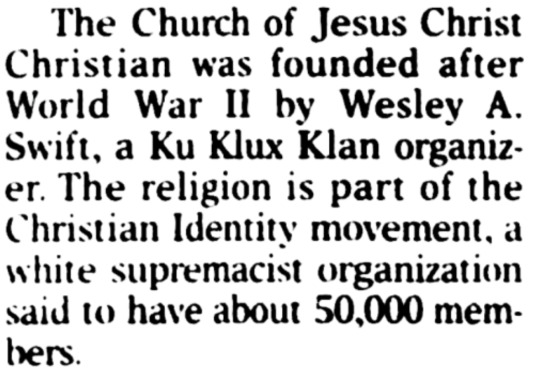
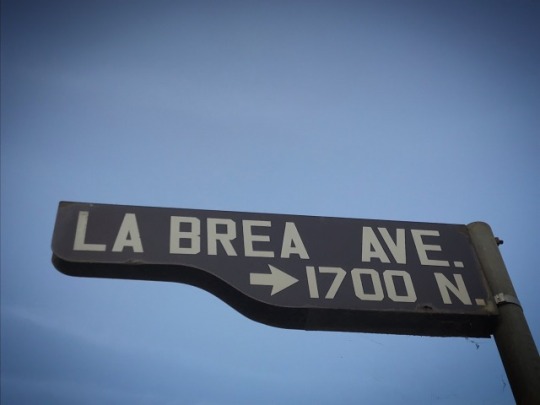


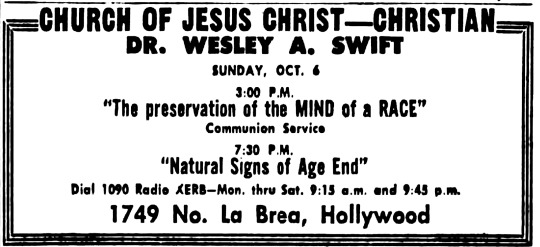


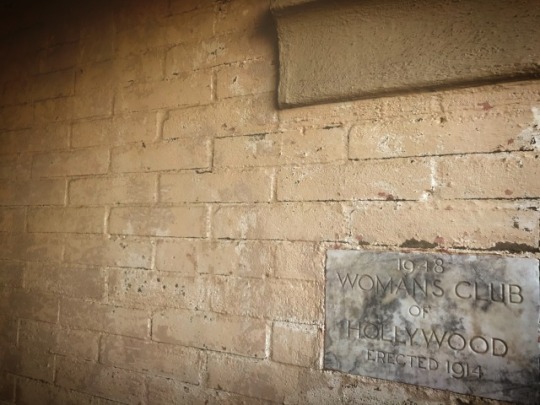




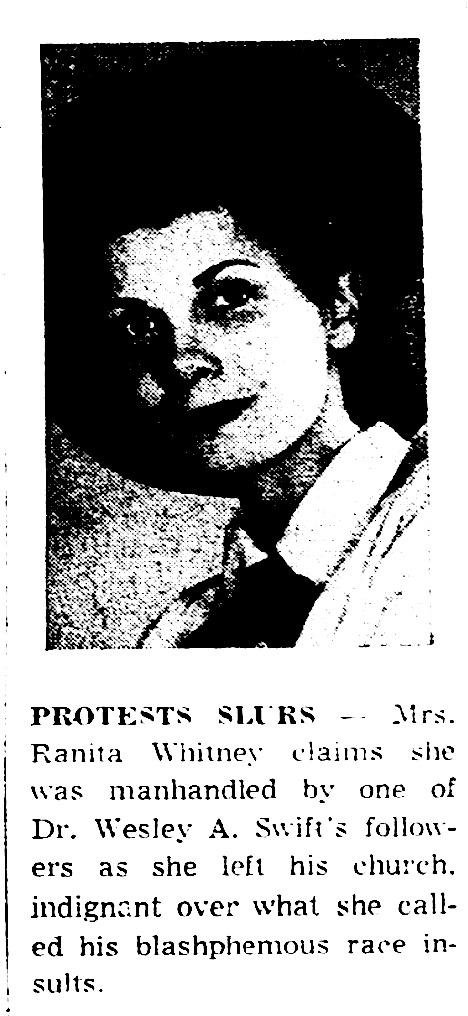


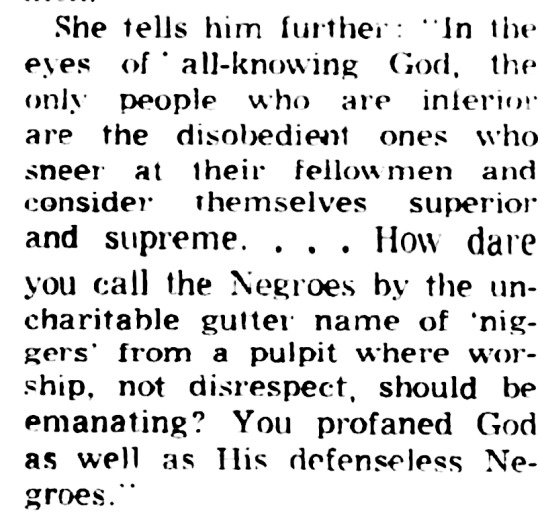



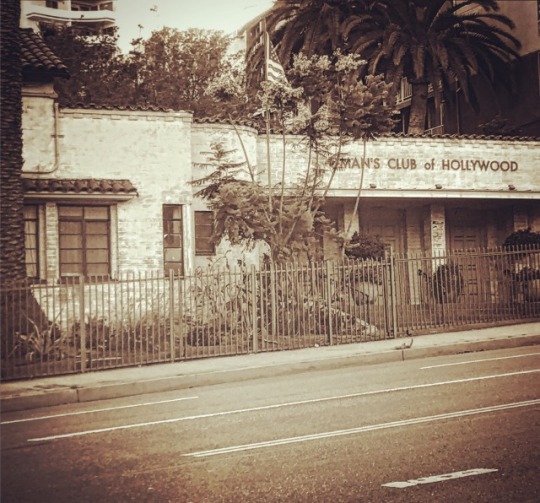
The Woman's Club of Hollywood is located at 1749 La Brea directly south of Franklin Avenue. It is right in the dead center of Hollywood, California. The venue is sometimes rented out for weddings.
However, their website has completely scrubbed its sordid history.
The LA Conservancy doesn't mention it either.
This ancient building has always had a weird vibe. Well, no wonder.
For ten years, from 1958 through 1968, it was the home base of "Christian Identity" preacher Wesley A. Swift.
He was bankrolled by an anti-Semitic haberdasher from downtown Los Angeles named James Oviatt. The downtown Oviatt Building is also rented out for weddings and the LA Conservancy leads an architectural tour of the building in which they fail to mention its Klan history.
Oviatt gave money to Wesley Swift to help assemble militias in the Antelope Valley for the purpose of weapons training with the ultimate goal of doing violent battle with Dr. Martin Luther King Jr. and the Civil Rights Movement. The organization became better known in the 1970s as the "Aryan Nations."
A sermon delivered by Wesley A. Swift in this venue in February 1965 was typical:
"I have here one of the most unique pieces of writing in a newspaper. This is Baldwin. Black Baldwin. The scum of Negroes today. Called a brilliant writer and a great author and a great intellectual. Well, his kind of intellect belongs in a pig pen. What he says in his writing, in a piece of literature, called literature, that goes into our schools as literature ... every time he sees a white girl - he wants to rape her! He wants to assault every white woman to bring her down to his level, which proves he knows he's not up on your level. And he can only think of depravity and immorality to bring the levels together, that means to bring you down ... He says we don't have any nation, we don't have any flag, but we're going to get one! We're going to get it by violence and bloodshed and revolution! The Negroes gonna rise and take over! And that was in the San Francisco Chronicle last week. You say: what caused all this? It's because we have not heeded divine law and we have permitted those that are not willing to follow the laws of God to gain ascendency in our nation."
During a sermon delivered here in July 1964 he railed against the Civil Rights Act:
"This tyrannical bill known as the Civil Rights legislation which passed the house this week … The house passed a bill ... which is so filled with state and federal tyranny that it denies you and any establishment, even a church, the right to criticize or to disagree with any law relative to desegregation and anti-discrimination!
"Makes it all so mandatory that there be prosecution against anybody who violates this law by securing the facts. A church would not be permitted to advocate the gospel of Christ or preach the content of this bible without violating their law as it relates to discrimination against pagan religions and against other gods.
"One could not tell the story of the advocacy of God selecting and electing your race to this responsibility of world leadership without a differentiation between races … and if you declare the thing that God is advocating you'd be subject to prosecution!
"Civil rights legislation, which is not civil rights, but wrongs to the great Christian majority intended on mongrelizing your race and destroying your faith and reducing your nation ... to ... an elite core of evil … I think it should be a basic Christian project of every Christian to do all that he can to see that the persons who would surrender the liberties of these United States into the hands of the dictatorial authorities [are not re-elected]."
From his La Brea Avenue pulpit, Swift ranted against the changing immigration laws of the mid-1960s:
"Why do they want to destroy our immigration laws? Because immigration laws are the result of the Church's recognition that if we permit a flood of immigration into America of pagans and Africans and Asiatics that can out vote and out maneuver Christians, that they'll take over America and our freedoms will go!
"If you don't think this is the strategy, then you turn very carefully and examine the texts … which these Swedish and Negro Communists wrote."
Swift frequently invoked terms like "freedom" and "liberty" in defense of his view point and characterized Civil Rights laws and anti-bigotry as "tyranny."
He delivered horrific, racist sermons right here in the heart of Hollywood every single Sunday for a decade - and I have yet to see anyone acknowledge it.
15 notes
·
View notes